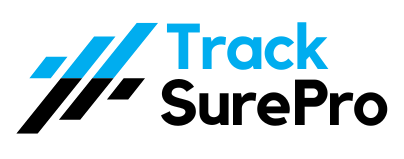The Ultimate Guide to Construction Compliance: Navigating OSHA, Worker’s Comp, and Insurance Requirements

The Ultimate Guide to Construction Compliance: Navigating OSHA, Worker’s Comp, and Insurance Requirements
Introduction:
In the dynamic and highly regulated landscape of the construction industry, compliance with various regulations is not just a legal obligation but a fundamental aspect of ensuring workplace safety, minimizing risks, and maintaining operational integrity. Construction firms must navigate a complex web of requirements from agencies such as the Occupational Safety and Health Administration (OSHA) and mandates for Worker’s Compensation (Worker’s Comp) and insurance. This comprehensive guide aims to provide construction professionals with an in-depth understanding of these crucial compliance areas, highlighting challenges, best practices, and the role of solutions like TrackSurePro in simplifying and enhancing compliance management.
Understanding OSHA Compliance:
- Scope and Importance:
- OSHA sets forth safety and health regulations for the workplace, aiming to prevent accidents, injuries, and illnesses among workers.
- Key OSHA Standards:
- Topics covered by OSHA standards include fall protection, hazard communication, scaffolding requirements, and respiratory protection.
- Challenges in OSHA Compliance:
- Construction firms face challenges such as navigating the complexity of OSHA regulations, conducting regular safety training, and maintaining accurate records.
Worker’s Compensation (Worker’s Comp) Requirements:
- Purpose and Coverage:
- Worker’s Comp provides benefits to employees who suffer work-related injuries or illnesses, including medical care, lost wages, and rehabilitation.
- State-specific Regulations:
- Worker’s Comp requirements vary by state, with each state setting its own rules regarding coverage, benefits, and reporting.
- Challenges in Worker’s Comp Compliance:
- Ensuring proper coverage for all employees, managing claims efficiently, and understanding state-specific regulations are common challenges.
Insurance Requirements for Construction Firms:
- General Liability Insurance:
- Covers third-party bodily injury and property damage claims arising from construction operations.
- Worker’s Comp Insurance:
- Mandatory coverage for employees in most states, providing benefits for work-related injuries and illnesses.
- Other Insurance Policies:
- Additional insurance types may include auto insurance, builder’s risk insurance, and professional liability insurance.
Best Practices for Compliance Management:
- Regular Training and Education:
- Conduct ongoing safety training sessions to educate employees on OSHA standards and safe work practices.
- Document Management:
- Maintain accurate and up-to-date records of safety training, OSHA inspections, Worker’s Comp claims, and insurance policies.
- Risk Assessment and Mitigation:
- Conduct regular risk assessments to identify potential hazards, implement controls, and minimize risks.
- Vendor and Subcontractor Oversight:
- Ensure subcontractors and vendors comply with OSHA standards and have adequate insurance coverage.
- Utilizing Technology Solutions:
- Implement software solutions like TrackSurePro for automated compliance tracking, document management, and reporting.
TrackSurePro as a Solution for Construction Compliance:
- Automated Compliance Tracking:
- TrackSurePro offers automated tracking of OSHA compliance requirements, Worker’s Comp claims, and insurance policy renewals.
- Document Management System:
- The software provides a centralized repository for storing and organizing compliance-related documents, ensuring easy access and retrieval.
- Training Module Integration:
- TrackSurePro includes customizable training modules to ensure all employees receive required safety training and certifications.
- Alerts and Reminders:
- Users can set up alerts and reminders for upcoming OSHA inspections, Worker’s Comp deadlines, and insurance policy renewals.
- Comprehensive Reporting:
- Generate detailed reports on compliance status, Worker’s Comp claims history, insurance coverage, and safety training completion.
Conclusion:
Navigating the complexities of OSHA, Worker’s Comp, and insurance requirements is a significant challenge for construction firms, but it is essential for ensuring worker safety and protecting the business from legal and financial risks. This ultimate guide has provided construction professionals with an in-depth understanding of these compliance areas, including challenges, best practices, and the role of technology solutions like TrackSurePro in simplifying compliance management. By implementing best practices and leveraging TrackSurePro’s features for automated tracking, document management, and reporting, construction firms can enhance their compliance efforts, mitigate risks, and ensure a safe and productive work environment. With a proactive approach to compliance management and the right tools at their disposal, construction firms can navigate the regulatory landscape with confidence and success.

